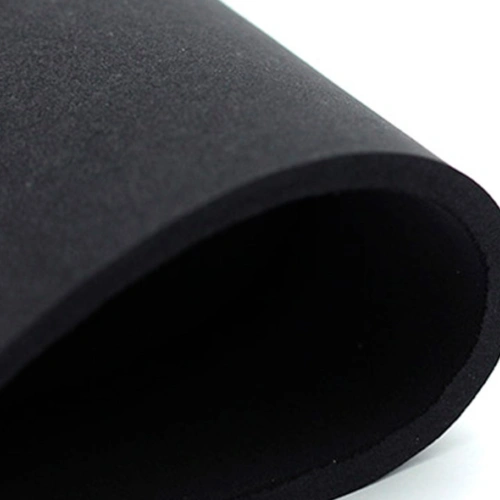| November 27, 2025
Choosing the right type of foam can directly influence the performance, durability, and safety of your packaging. Although EVA foam and Crosslink are often compared due to their similar uses, their technical characteristics and actual performance can vary significantly.
In this guide, we explain the essential differences between EVA Foam and Crosslink, highlighting why cross-linked polyethylene (XLPE) is the superior alternative for industrial applications, specialized packaging, and product protection.
What is EVA Foam and where is it used?
EVA foam is a foamed material made from ethylene-vinyl acetate. It is characterized by being flexible, lightweight, and economical, making it common in applications such as footwear, mats, crafts, toys, and basic cushioning parts.
Its popularity is due to its ease of molding, vibrant colors, and an acceptable level of impact absorption, making it suitable for non-industrial uses or products with low protection requirements.
However, when it comes to technical performance, dimensional precision, or protection against higher energy impacts, EVA foam has clear limitations compared to cross-linked polyethylene solutions.
What is Crosslink (XLPE) and why is it superior?
Crosslink or cross-linked polyethylene (XLPE) is a closed-cell foam subjected to a process of chemical or physical cross-linking that enhances its internal properties. This process creates a more stable and uniform molecular structure, resulting in:
Better mechanical strength
Greater impact absorption capacity
Low water absorption
High durability
Excellent dimensional stability
Premium finish ideal for professional presentations
Its outstanding performance makes it the ideal material for polyethylene foam packaging, industrial, automotive, medical applications, and protection of high-value products.
EVA Foam vs Crosslink: key differences
Below, we break down the most important differences between EVA foam and Crosslink, explained clearly and oriented towards technical decision-making.
Structure and strength
While EVA foam has a less uniform cellular structure, Crosslink features finer and more homogeneous cells thanks to its cross-linking process.
This results in a material with much greater mechanical strength, ideal for parts that require precision, clean cuts, or the ability to withstand constant loads without deforming.
Impact absorption capacity
Although EVA foam offers basic cushioning, its performance does not compare with the high impact absorption of Crosslink.
The cross-linked polyethylene better dissipates energy, protects delicate products, and prevents permanent deformations even under demanding conditions. That's why it's so widely used in specialized packaging, electronics, and precision tools.
Durability and dimensional stability
Over time, EVA foam tends to degrade and deform when subjected to prolonged loads or extreme environments.
In contrast, Crosslink maintains its shape, density, and stability even under temperature variations, humidity, or continuous stress. This durability makes it a reliable solution for industrial applications and long-lasting use.
Appearance and finish
The finish of EVA foam is usually porous and less uniform, which can affect the appearance of the final product.
On the other hand, Crosslink offers a finer, professional, and elegant finish, ideal for premium presentations and value-added packaging. This makes it the best choice when aesthetics are also a key factor.
Applications and level of demand
EVA foam works well in simple applications: crafts, footwear, light fillings, mats, among others. Crosslink, on the other hand, is the preferred option when looking for precision, performance, and protection:
Polyethylene foam packaging for fragile products
Automotive components
Insulators and technical parts
High-end sports protections
Medical and electronic devices
Due to its versatility, strength, and professional performance, cross-linked polyethylene is the superior choice for industrial operations that require quality and reliability.
Cost vs. real value
Although EVA foam usually has a lower initial price, Crosslink offers greater added value by reducing damage, prolonging lifespan, and improving product presentation. It is a smart investment for companies looking to optimize their processes and minimize losses during transportation or storage.
Which is the best option?
Although EVA foam adequately fulfills light and low-risk applications, Crosslink surpasses in performance, durability, aesthetics, and protection at all levels. If your goal is to ensure quality, minimize damage, and offer professional packaging, cross-linked polyethylene is undoubtedly the best choice.
Are you looking for high-performance Crosslink for your industrial projects or packaging? Contact us at Worldwide Foam and discover our solutions in premium polyethylene foams tailored to your needs.
Worldwide Foam

We are leaders in the supply of closed cell polyethylene foam in Mexico. We support various industries by offering a wide range of products and complementary services.











